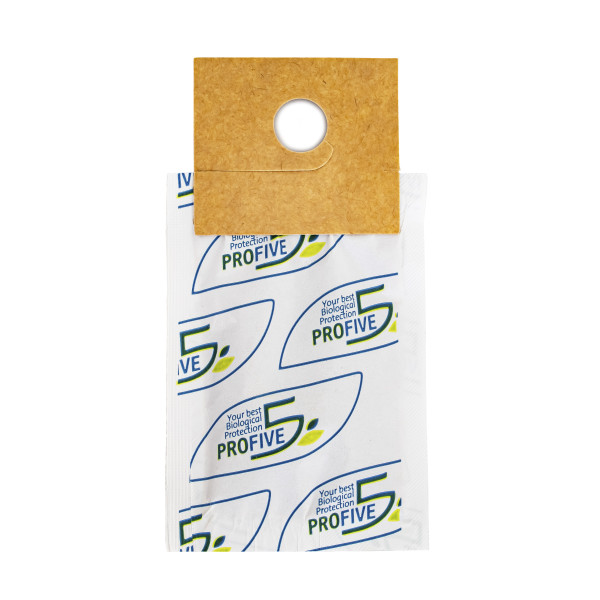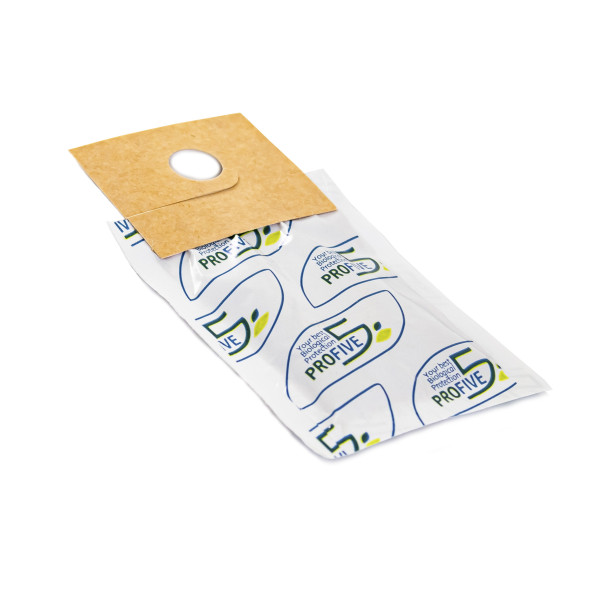What is ANDER PRO5?
Amblyseius andersoni is a predatory mite from the family Phytoseiidae that preys on phytophagous mites, such as spider mites and others. Additionally, this microscopic entomophage (measuring less than 1 mm) with a light beige color can also feed on thrips, honeydew, and flower pollen. The mite is capable of functioning within a wide range of temperatures, being resistant to cool conditions and tolerating elevated temperatures. Its high efficacy at lower temperatures makes it suitable for use during winter periods when Neoseiulus californicus is less effective. Amblyseius andersoni is active even at +14°C! Unlike most phytoseiids, it can be used on tomatoes due to its ability to move among trichomes. Amblyseius andersoni does not cause plant damage and has no negative impact on the environment, making it safer than traditional synthetic pesticides. This predator is widely used and has proven its effectiveness in the biological plant protection market.
Life cycle.
The life cycle of Amblyseius andersoni consists of several developmental stages, including egg, larval stage, two nymphal stages, and adult. The eggs are transparent, oval-shaped, and have a diameter of about 0.2 mm. During their development, all mobile stages of the entomophage feed on pests such as phytophagous mites and other small invertebrates. Depending on external environmental conditions, the time from egg hatching to adult maturity can range from 4 to 21 days.
Pests.
Amblyseius andersoni prefers to feed on phytophagous mites and other small arthropods. Its use is recommended for controlling spider mites, particularly two-spotted spider mite (Tetranychus urticae), carmine spider mite (Tetranychus cinnabarinus), as well as tomato russet mite (Aculops lycopersici), European red mite (Panonychus ulmi), and citrus red mite (Panonychus citri). Amblyseius andersoni has high efficacy in controlling pests such as broad mite (Polyphagotarsonemus latus), cyclamen mite (Phytonemus pallidus), Oligonychus perseae, Aceria anthocoptes, and others. Its high effectiveness in controlling targeted pests has been confirmed through years of practical use in protected cultivation.
Crops.
Amblyseius andersoni is used in a wide range of crops, including:
• Vegetables: cucumber, tomato, bell pepper, eggplant, zucchini, beans, and others.
• Berry crops: strawberry, raspberry, blackberry, blueberry, cranberry, and others.
• Ornamental plants: rose, chrysanthemum, gerbera, anthurium, and others.
It is also used on ornamental conifers, grapevines, and fruit trees, especially citrus.
Benefits.
As the sachets contain larvae, nymphs, and eggs of the predator, the emergence of the predator from the sachet will occur within 4 weeks, ensuring prolonged protection of the crop.
Application.
It is recommended to introduce the mites at an early stage of plant growth to allow them to effectively control pests throughout the season. Sachets are evenly distributed throughout the crop. To obtain precise application rates for your crop, please contact our managers.
Storage.
Storage of Amblyseius andersoni should follow specific guidelines to ensure maximum effectiveness of the biological control. Here are a few recommendations:
• The maximum storage period for the product from the time of receipt is 1-2 days.
• Store the product in a horizontal position in a cool place protected from direct sunlight, at a temperature of 12-14°C. It is important to remember to avoid contact with pesticides during the storage of the mites.
• Storing the entomophages in a refrigerator or freezer is prohibited as it may lead to their death.
There are no reviews for this product, be the first to leave your review.


